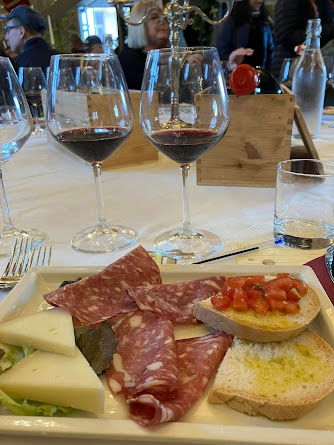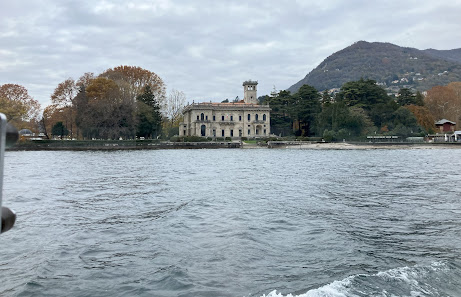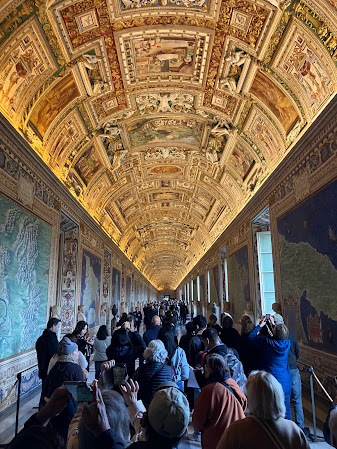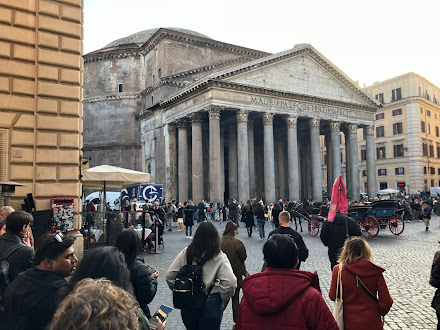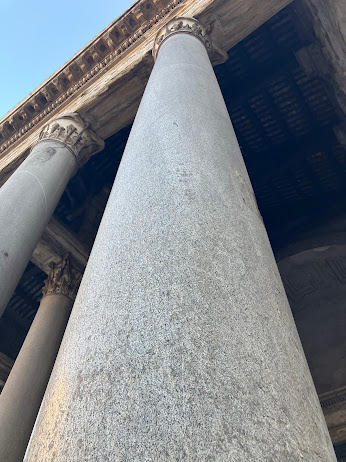This was the fourth Thursday in November, a significant date for the Americans on the tour with us, but it did not seem like Thanksgiving at all. It was warm and cloudy as we left Florence and drove south toward Rome instead of heading over the river and through the woods to Grandmother's house. We stopped on the way at the American Cemetery, where 4400 US soldiers who were killed in Italy during World War II are buried. It was a sobering but beautiful place, as most cemeteries are, filled with cypress trees and row upon row of gravestones.
Our next stop was San Gimignano, the second time we had visited this city, and the streets seemed familiar to us. The views looking out over the rolling hills of Tuscany are beautiful, and we had a relaxing time, buying some gifts and enjoying a cappuccino at an outdoor café.
Next we boarded the coach for a wine tasting and lunch out in the countryside, and to our surprise we recognized the familiar gates to Tenuta Torciana, which we had visited on our first tour exactly one month ago (on another American holiday, Halloween). The wine and the food were delicious – salami, cheese, and bruschetta, instead of turkey and dressing.
After lunch, we returned to Rome for a farewell dinner – we would
be leaving the next morning for the airport and our return flight. There was some kind of “stomach bug” going
around, and several of our fellow travelers said they were affected. So we joined two or three other couples and
returned straight to our hotel, the Shangri La, rather than exposing ourselves
to something like that at a dinner the day before boarding our flight. Thankfully we succeeded in staying well, and
the next morning we took a coach to the airport, and in what seemed like no
time at all, we were in the air, making that long transatlantic flight, first
to Philadelphia and then to Charlotte.
Martha had been posting on Facebook nearly every day, and we
were often surprised by how many people back home were following us. She posted one final comment as we were
boarding our flight, which perfectly expresses how I felt, as well, as we concluded another wonderful journey!
"Farewell Italy! We have enjoyed sharing our trip with our Facebook friends. Thanks to the “armchair travelers” for your special comments along the way. We hope our adventures have inspired some of you to travel and brought back wonderful memories for others."
Arrivederci Italia!



